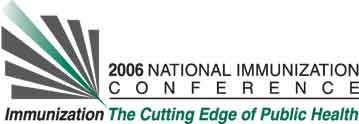Jim Marshall1, Robin A. Pollini
2, and Manning Fienleib
2. (1) Tribal Epidemiology Center, United South and Eastern Tribes, Inc, 711 Stewarts Ferry Pike, Suite 100, Nashville, TN, USA, (2) Epidemiology, Bloomberg School of Public Health, Johns Hopkins University, 627 N. Washington Street, Baltimore, MD, USA
Learning Objectives for this Presentation:
By the end of the presentation participants will be able to:
1. List three initial steps in building capacity for tribal immunization surveillance.
2. Describe the impact of an active reporting system versus a passive system.
3. Identify the two surveillance components of the Immunization Project.
Background:
An organization of 24 federally recognized tribes lacked the funding and personnel capacity for immunization surveillance. In 2001, the organization was funded under a capacity building grant from the CDC's Racial and Ethnic Approaches to Community Health (REACH) 2010 initiative to increase surveillance for immunization coverage and vaccine preventable diseases, provide training and technical assistance to member tribes, and hire a coordinator for the Immunization Project.
Setting:
Tribal health clinics, Indian Health Service clinics, and other public health settings.
Population:
Members of 24 federally recognized American Indian tribes.
Project Description:
The Immunization Project assessed the baseline surveillance capacity of each tribal site. The project worked with the Indian Health Service area office to ensure each tribal site had the Immunization Registry installed. Immunization Registry training was provided to tribal immunization coordinators and immunization reports were collected quarterly. Incidence of vaccine preventable diseases was taken at baseline and is done annually. Ongoing training and technical assistance for tribal personnel is provided. Tribal health personnel are issued reports detailing accomplishments, current activities, and future initiatives.
Results/Lessons Learned:
Immunization surveillance has increased remarkably through registry use and training without a significant decrease in coverage. Recommendations include continued training and technical assistance for tribal personnel, implementation of a more sensitive and specific surveillance system for reporting of vaccine preventable diseases, and establishment of data linkages between tribal and state immunization registries to increase the completeness of reporting immunization coverage.
See more of Posters
See more of The 40th National Immunization Conference (NIC)

